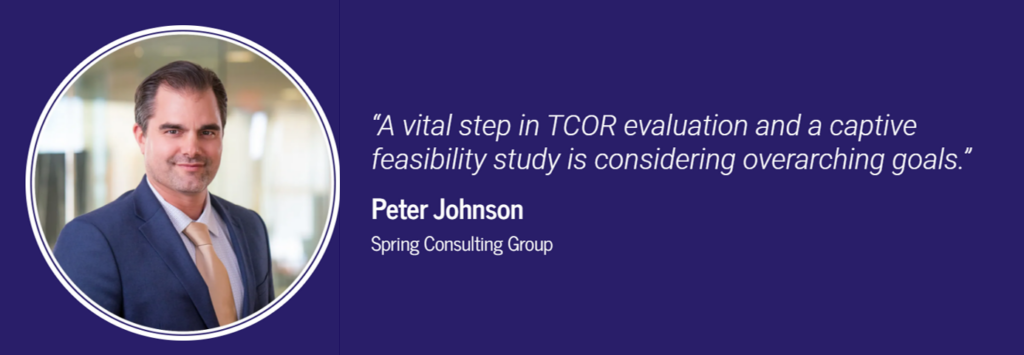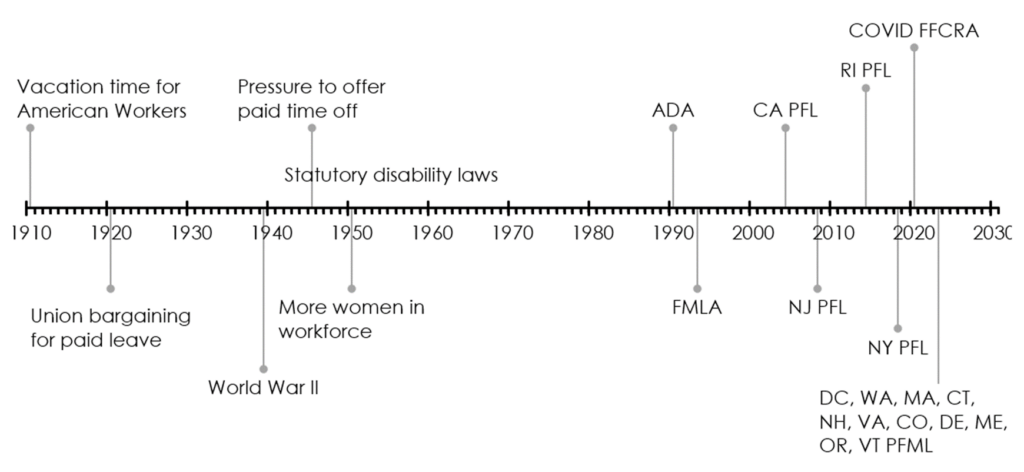With winter quickly approaching, the Cayman Captive Forum last week provided a great escape from the cold weather and a fantastic excuse to visit a tropical paradise. As Cayman is the second largest captive domicile (behind Vermont), it is more than a vacation spot; a rewarding opportunity to address top trends and practices in the captive insurance and risk management space. Here are some driving topics of interest this year:

AI and Risk Management
As concerns surrounding artificial intelligence (AI) dominate headlines and conversations worldwide, it was only fitting that it was a popular topic of discussion this year at Cayman. AI holds an interesting position in risk management, in that it can be used to help identify risks and create efficiencies; but also can create vulnerabilities in cyber and digital. Here are a couple of innovative sessions on AI’s impact on risk management:
– During the presentation “AI and your Captive,” beverage distributor, Southern Glazer’s Wine and Spirits explained how they were able to optimize their captive using AI and machine learning tools.
– In the eye-catching session, “Chat-GPT/AI Concerns in Claims/Risk Settings,” risk experts reviewed how AI is being used in cyberattacks, especially towards healthcare organizations. They also examined the recent emergence of AI chatbots in healthcare.
Cyber Risks
This year there have been over 327 healthcare data breaches reported to the US Department of Health and Human Services, involving more than 40 million patients’ data1. Cyber is a top priority for risk managers, especially those working for healthcare employers. Here are some highlights:
– The session, “Complex Cyber: Renewal to Claims” looked at current cyber insurance market trends for healthcare organizations and recommendations for protecting patient information from adverse incidents.
–With emerging technologies, cybercriminals have more tools than ever at their disposal. A presentation titled “Cybersecurity Trends and Tomorrow’s Challenges: Future-Proofing Your Organization” highlighted strategies to combat evolving cyber threats.
Risk Face by Healthcare Organizations
As Cayman is the largest domicile for healthcare organizations2, healthcare-related risks receive a lot of buzz each year, and 2023 was no exception. Healthcare organizations face unique challenges, some of which include:
a) Social Risks
Within the healthcare sector, risk management teams must balance distinctive social and legal issues on top of day-to-day operations. Some noteworthy sessions included:
– The presentation, “The Impact of Social Inflation on Captives and Others,” reviewed shifting trends in medical professional liability and explored how risk management teams can better understand changing social influences and the risks tied to them.
– One engaging session entitled, “Reproductive Care Post-Dobbs: Protecting Patients and Providers,” provided insights into how a healthcare organization was able to identify emerging risks associated with reproductive care.
b) Workplace Safety and Medical Malpractice
With unique risks come unique coverages. Healthcare organizations often must turn to specialty insurers and experts to evaluate risks associated with workplace violence and medical malpractice. These topics were widely discussed during the conference:
– In the one-of-a-kind session, “Active Shooter Workplace Violence – Claims Coverages Consequences,” the Captive Owner from the University of Pittsburgh Medical Center drew takeaways from their mass shooting over a decade ago.
– A session on “Implementing Structured Communication Processes to Avert Malpractice Claims & Reduce Patient Harm” spotlighted how nearly half of malpractice claims come from miscommunication and provided suggestions on streamlining communication.
– The final session of the conference “People Behaving Badly” reviewed a high-profile case where medical providers harmed patients and professional liability considerations for healthcare companies when disciplining or terminating staff.
c) Other Priorities
In addition to the topics discussed above, some other notable healthcare industry-focused sessions included:
– As virtual care continues to be popular post-pandemic, a group of risk experts discussed recommendations for “Managing the virtual practice of medicine in multiple states & the unique risks associated with this practice.”
– In a virtual session, “A total guide to total cost of risk,” an actuary and captive consultant discuss how to properly calculate and identify Total Cost of Risk (TCOR) and suggestions on how to adjust to changes in TCOR.
The Cayman Captive Forum was a strong finish to the year in terms of lessons learned and connections made. The farewell beach party is always an added bonus! We welcome this chance to reflect back and look forward to what 2024 has in store for the captive space.
1 https://www.urologytimes.com/view/health-care-cyberattacks-soaring-in-2023
2 https://caymanintinsurance.ky/about/
As Seen in Captive International’s Cayman Focus 2024
Total cost of risk (TCOR) is a buzzword in the insurance space, but it is a metric that carries significant operational weight, and can mean different things depending upon the organisation. There is no tried and true approach to TCOR, but we have gleaned valuable insights after consulting on the topic across a range of companies and risk profiles.
Leveraging those insights, we are sharing here a foundation for framing TCOR at your organisation, keeping in mind common dos and don’ts we have come across.
What is TCoR?
It’s important to start at the beginning. While there are various definitions out there, the International Risk Management Institute (IRMI) states that TCOR is the sum of all aspects of an organisation’s operations that relate to risk, both the cost of managing risks and the cost of losses incurred. These costs typically fall into the following categories:
- Retained (uninsured) losses and related loss adjustment expenses
- Risk control costs
- Transfer costs
- Administrative costs
More sophisticated risk management programmes may have internal risk control costs, whereas for other organisations these may be embedded into what is paid to a carrier with the goal of controlling loss.
Commercial insurance premiums are a prime example of a TCOR driver, representing what you are paying to transfer certain costs to the commercial or reinsurance market. Even for organisations with a captive, which is known to save organisations money in the long term, a risk transfer premium is still happening from the parent company to the captive.
Further, whether or not a captive programme is in place, most companies, especially those on the larger side, still retain a portion of their risk on their corporate balance sheet (eg, cyber deductible).

Building your TCoR
What constitutes TCOR varies across industries and company but regardless it can be backed by sophisticated risk management models as well as simpler calculations.
From a broad perspective, commonly overlooked considerations when it comes to tracking TCOR include:
- Beyond the frictional carrier or captive out-the-door premiums, other items budgeted for on the insured side such as safety programmes, loss control, and bonus programmes should be evaluated for inclusion or exclusion. If they are tracked within a captive premium (as is typically the case with loss control), such items are captured already so a company needs to be cognisant of not double-counting.
- Investment and underwriting income. Generally captives are priced to earn underwriting income and also earn investment income on the held assets to pay for unpaid claims. This income should be accounted for, which results in a lower TCOR.
- Softer costs such as risk management or safety personnel should be assessed for inclusion. Overall, consideration beyond obvious face-value expenses and including ancillary factors across the company provide a more robust calculation. Actuarial estimates of claims should be utilised for validation. Avoid relying solely on loss runs as this creates volatility because the third-party administrator (TPA) is typically only booking case reserves in the incurred claim estimates without factoring in the actuarial incurred but not reported development.
- Evaluation dates and look-back periods provide for quality tracking and the generation of trends, and should be assessed at various points in time. This is important when trying to compare the costs of various programmes related to budget and cash flow.
Perhaps most important is the need for year-over-year consistency regarding what is included in TCOR and what is excluded.
Who uses TCOR?
TCOR is meaningful to different stakeholders depending on the company, but these key audiences have important use cases for TCOR as follows:
- Risk managers leverage TCOR to show how they are approaching risk management and demonstrate how the company should retain risk, either through a captive premium or another method, as well as recommend what portion of risk should be transferred.
- Finance/accounting departments use TCOR to stress test and illustrate how much the organisation can afford and then plan for budgetary items that should reduce stated risk.
- Property and casualty (P&C) brokers care about TCOR because it enables them to benchmark and perform retention analyses in order to optimise programmes and mitigate volatility for their clients. TCOR allows them to make an apples-to-apples comparison year over year.
Trends and best practices
TCOR should not be touted simply because it sounds good. It needs to be grounded in analytics, formal reviews, and comprehensive reporting that outlines how TCOR is arrived at and what it means for your organisation. For large companies, TCOR may be factored into bidding, procurement, and contract processes. For smaller companies, there may not be enough critical mass to validate a self-funded approach, which means you’re more susceptible to market conditions and capacity.
From an organisational standpoint, TCOR plays a significant role in (i) accountability and compliance; (ii) making sure all assets, certificates of insurance, and contracts are listed; (iii) employees are accounted for; and (iv) there are no gaps in coverage that could change TCOR unexpectedly at the end of the year.
A vital step in TCOR evaluation and a captive feasibility study is considering overarching goals. If your company is looking to stay at cost, then moving to a captive may not always be the best play and you may be better off in the commercial market. This is why, as part of a TCOR analysis that is embedded within a feasibility study process as a means to reduce risk, alternative retentions in the market should be evaluated and the different scenarios to determine whether or not a captive makes the most sense outlined.

Other pieces of TCOR wisdom we have gathered over the years include:
- Fluctuations will happen from year to year, but some of the more volatile components are captive income and retained claims.
- A common misconception is that by increasing retention, lowering limits, or both combined, a reduction in TCOR will automatically occur. This may be true but is not necessarily so, as these practices could also expose the company to more risk than anticipated and that loss potential may not be appropriately projected.
- Consider this: with cyber and umbrella coverage becoming expensive for companies, let’s say you drop cyber entirely and lower limits to reduce TCOR by 5 percent. But then there’s a $3 million loss within that layer that would have been covered by policies you no longer have, so even though your budgeted TCOR went down by 5 percent, your realised TCOR increased by 10 percent due to the new loss.
- Analysis should consider different scenarios: what could happen, versus a straight-line evaluation.
- Ensure that at the time of increasing or decreasing a limit or removing a policy altogether, all parties agree to this move and it is documented to avoid questions after the fact.
- Benchmarking TCOR should be taken with a grain of salt, as practices are varied and factors such as captive versus no captive, geographic risk class differences, treatment of risk management admin costs, inflation and payroll may be working behind the scenes and can prohibit a direct comparison between two different organisations.
Conclusions
TCOR is complicated, but it is important to take a wide view of all the pieces of the puzzle, and then find the correlations and mitigation strategies available through the buying process. Captives need to understand how to budget for TCOR, how to build it at your organisation, and then how to interpret it year over year.
Strong TCOR practices can lead to improved risk management, smoother claims processes, and overall lower costs, especially for growing companies. A thoughtful TCOR approach serves to unify all your insurance stakeholders, from risk managers to CFOs, in understanding insurance spend and ultimately the total cost of risk.

Title:
Consultant
Joined Spring:
I joined Spring in July 2017, shortly after I graduated from college.
Hometown:
I was born in Maine but grew up in Stockton, NJ. It’s a really small town and my elementary school only had about 60 people in it total.
At Work Responsibilities:
I work on our Absence Management Team and primarily help clients with their absence policies, as well as health and Rx plans. I also spend a lot of my time monitoring the paid leave landscape and updating our clients on legislative developments that may impact their leave programs throughout the country.
Outside of Work Hobbies/Interests:
I recently moved back to NJ and spend a lot of my time with my family and dogs, reading, and exploring my new neighborhood.
Fun Fact:
I spent a semester studying abroad in Cape Town, South Africa!
Describe Spring in 3 Words:
Dedicated, Invested, and Fun
Favorite book (or one you’ve recently read):
I just finished All The Light You Cannot See. I don’t think I can pick an overall favorite book.
Pets:
My family dog Scout (Chocolate Lab) and my “nephew” Alan (Red Lab) but I consider them mine 😊

Captive International has released the winners for the 2023 US Awards. Spring is proud to announce that our Managing Partner, Karin Landry won the Best Feasibility Study Individual. We were also highly commended for Best Actuarial Firm, Top Feasibility Study Firm, and Top Captive Consulting Firm. Our team was also highly commended for the following: Best Individual Captive Consultant (Karin Landry & Prabal Lakhanpal), Best Individual Feasibility Study (Prabal Lakhanpal) and Best Actuary (Peter Johnson & Nick Frongillo).









After operational difficulties posed by the pandemic settled, a large, global hospitality organization wanted to refocus on employee health and productivity, with operational efficiency and risk management in mind. With an emphasis on the employee experience, the client engaged Spring to conduct a review of their workers’ compensation, disability and leave of absence plans, policies and processes with the goal of understanding how they compare to industry best practices and how insourced, outsourced, or cosourced models could yield improvements.
Spring’s Work
After thorough research and analysis, we proposed a shift from the decentralized, separate, and insourced disability and LOA model to a centralized, integrated, and outsourced approach across WC, FMLA/LOA, ADA, RTW and STD/LTD. Our holistic model incorporates:
- Minimal disruption by utilizing existing STD/LTD vendor for disability & LOA management and recommendations to optimize this partnership and establish linkages with WC vendor
- LTD and STD continue to be funded through the captive
- Client team hiring plan/staffing model
- ADA claim management software
- Training for HR, managers, and vendors to align on both process and culture
- Best practices for intake, claim, submission, and customer service journey points
- Case management, claims administration, RTW and accommodation management
- Ongoing absence status and reporting/metrics
- Technology and administration partners to meet needs
- System integration with payroll, HRIS, and other systems
By outsourcing, the client can achieve its goals of:
- Increasing operational efficiency
- Improving employee health and productivity
- Applying the right resources at the right time
- Reducing administrative burden for client team
- Mitigating risk by transferring the responsibility for day-today absence tracking, management and compliance to a third party
The Results
Spring is working to implement the solution to yield the following quantitative and qualitative success factors:
Qualitative
- Decreases colleague and manager confusion and better the employee experience
- Positions HR in an advocacy role; enhance the ability to inform and remind employees of benefits and resources they have available to them to help during a time of need
- Increase employee satisfaction regarding applying for days off
- Better communication and integration between benefits and risk management teams
Quantitative
- Decreases claims costs that flow through to client’s captive (and number of claims, or incidence), leading to higher savings
- Due to formalized processes and reporting
- Reduces benefit payout amount
- Enhances productivity due to fewer lost workdays (lessen duration of leaves) and stronger RTW
- Due to early intervention, strong policy provisions, RTW and accommodation philosophy and tight benefit coordination
- Lowers replacement costs when colleagues are out
- Avoids legal claims and lawsuits
- Anticipates close to $10M of direct savings over a 5-year period and a conservative ROI projection (savings minus expenses): $1.2M
Have questions about how to build or improve your absence management program to see tangible results like these? Check out our website or get in touch today.
While paid family and medical leave (PFML) remains in the state regulatory spotlight, much of the workforce is not covered by these laws or has leave needs outside of what is available. At the height of COVID-19, the American Journal of Emergency Medicine reported a 25%-33% increase in reported domestic violence cases. According to WHO, mental health issues rose 25% in 2020. These issues did not disappear even though the pandemic dust has settled.
Cutting-edge employers are leveraging ancillary types of paid leave as support tools for employees. They are thinking beyond traditional offerings and facilitating easier navigation so that when an employee experiences a hardship, understanding work leave options does not add to their mental burden. I had the pleasure of presenting on this topic at the 2023 Disability Management Employer Coalition (DMEC) Compliance Conference, and I wanted to share key insights.
Paid Leve Evolution
In October of 2023:
- 10 states and Washington D.C. currently require employers provide paid family and medical leave (PFML) benefits, in addition to Hawaii which requires only statutory disability benefits be provided
- 2 states have passed voluntary PFML laws with 6 more creating PFML insurance rules which allows employers to purchase insured PFML if they are interested
- 5 states are in the regulatory phase of PFML, where benefits are not yet available
- 32 states do not have PFML benefit laws (excluding Washington D.C., Hawaii which has a statutory disability benefit, and the states that fall solely into the “PFML insurance rules” category, as that does not constitute a state law)
- Still much of the workforce is not covered by these laws
- Check out our whitepaper for a more detailed landscape of state PFML policies
It has been a long road to get to this patchworked state, however. The push for time off dates back to 1910 when President Taft proposed that every American worker needed two to three months of vacation a year. U.S. legislators did not agree, so unions were left to bargain for paid vacation from the 1920s through the 1940s.
During World War II, when employers were scrambling for talent, the offer of paid vacation rose as a way to increase compensation due to wage controls that were in place at the time. Statutory paid disability laws began passing in 1942, with laws in RI, CA, NJ and NY in place by 1949.
On the federal level, very little progress was made until the mid-20th century, when women increasingly entered the workforce and thus the focus then expanded beyond paid vacation time to broader family-related leaves. From there, as illustrated below, we have seen an array of paid and unpaid leave laws pass at both the state and federal levels, with the onus for paid leave largely falling to state legislation due to a lack of movement on the federal stage.

Current Leave Landscape & Employer Tactics
Here is a high-level snapshot of leave options available today.
Mandatory
Federal
- Family and Medical Leave Act (FMLA)
- American’s Disability Act (ADA/ADAAA)
- Uniformed Services and Employment and Reemployment Rights Act (USERRA)
State
- Paid family leave (PFL)
- Paid family and medical leave (PFML)
- Statutory Disability Insurance (SDI)
- Workers’ Compensation (WC)
- Paid Sick Leave (PSL)
Local
- Sick leave laws
- Apply federal, state, and local entitlements
Voluntary
Offered at employer’s discretion
Examples Include:
- Paid leave in a state that does not offer PFL or PFML
- Personal leave
- Bereavement leave
- Vacation, sick or PTO beyond mandates
It’s important to note that of the above leaves, some are fully paid, some are partially paid, and some are unpaid. Job protection in the event of an absence from work may or may not be granted, depending on the situation and policy at play. This landscape leaves significant gaps, which many employers are looking to close with ancillary options.
Employers generally recognize the value of leave benefits, in that they serve to:
- Support employees
- Retain talent
- Recruit talent
- Combat productivity losses, often related to personal and family health problems (being “present” does not always mean being productive)
There is now a movement to expand upon traditional fundamentals in this area to better address widespread issues. Specifically, we have seen an uptick in (a sample list):
- Bereavement leave
- Domestic violence support
- Mental health support
- Personal leave
- Wellness days
- Compassionate leave
- Sabbatical leave
- Time Off in Lieu of Working Overtime (TOIL)
- Humanitarian leave
Even the most generous of programs, however, can fall short if careful thought is not given to communication strategies around offerings available, employee education surrounding leave eligibility and protocols, and population needs.
Compliance Considerations
The greater the volume of leave types on the table, the more complex compliance becomes. As such, employers should have processes in place regarding:
- Determining which leave laws and policies may apply to an employee’s request (federal, state, local) and run leaves concurrently when applicable
- Training managers involved in the employer’s leave policies
- Administering leave policies in a consistent and non-discriminatory manner
- Ensuring engaging in the interactive process to determine reasonable accommodations under the ADA which includes leave as an accommodation
- Continuing group health insurance benefits during employee leave
- Allowing for an equal amount of paid time off for parental leave policies for both caregivers
- Using language in policies that is gender neutral
- Ensuring adherence to reporting and tracking requirements
Looking Ahead
As veterans in the integrated disability and absence management space, we cannot see the future, but we can offer informed predictions about what’s to come. We anticipate state activity will continue to push employers to expand their leave offerings. Flexibility and work-life balance will remain in the spotlight, and employees will be working toward being more informed about their leave rights, so compliance will continue to take precedence. Operationally, we expect that more HR and benefits teams will turn to outsourcing to mitigate staffing issues, and will look to fully integrate leave benefits into a single system to reduce administrative burden, streamline processes, and increase reporting capabilities.
If you are interested in benchmarking your leave programs, integrating benefits, or better understanding best practices in this area, Spring would love to hear from you.
Spring has been recognized as one of the Top Employee Benefits Consulting firms in Massachusetts by Mployer Advisors, who focus on connecting employers with top-rated insurance advisors. We’d also like to congratulate our colleagues at Boston Benefit Partners, An Alera Group Company, for making the list as well! You can find the full update here.
As we prepare for 2024, we are in an interesting time for HR teams in that they are facing challenges such as back to office strategies and changing workplace expectations, all on top of a full plate of duties. Last week I attended the Northeast HR Association (NEHRA) Annual Conference, which brought together leaders and industry experts to delve into crucial topics that have become front and center HR today. This year’s conference explored vital themes, including mental health/well-being, innovative leadership tactics, and the importance of Diversity, Equity, and Inclusion (DEI). Here are the highlights from this enlightening event.
Nurturing Mental Health and Well-being
One major theme at NEHRA’s Annual Conference this year was meant health and well-being, a popular topic in the world of HR. The discussions were both insightful and innovative, with presenters emphasizing new trends and practices to help support employees’ mental health. Here are some presentations I found impactful:
– In the session, “Neuroinclusion in the Workplace: A Win-Win for Both Employers and Employees,” a well-being expert discussed strategies to support neurodivergent employees to foster workplace collaboration and effective communication.
-The Founder and CEO of Wellbeing Works, Shanna B. Tiayon discussed how HR departments can support employees experiencing trauma though proper communication and resilient HR structures.
– The closing keynote, titled “Transform Your Workplace Through Connection & Community,” focused on developing an understanding of the benefits of having a connected work community and how to develop inclusive programs.
Innovative Leadership Tactics
One of the most pertinent points discussed was the role of HR in shaping leadership. The event brought forward outside-the-box ideas for fostering leadership excellence, creating an inclusive environment, and retaining and developing potential future leaders. Below are some presentations I would like to spotlight:
– A presentation titled “Who’s on Deck? Succession Planning that Eliminates Fears and Reduces Cost,” reviewed the advantages of promoting talent internally and tips for developing middle management for leadership roles.
-A leadership development expert explored top management tactics and the importance of developing workplace conditions that bring out the best in people. The session was titled “Reimagining Managers: Why the Best Managers Don’t Manage People.”
– In the era of hybrid work, effective and efficient meetings can be challenging. The breakout presentation, “Mastering the Art of Meetings: Powering Up Your Gathering,” reviewed ways to prioritize productivity without sacrificing workplace culture during meetings.
Championing Diversity, Equity, and Inclusion (DEI)
Developing and enhancing DEI efforts continues to be a top priority for HR teams. The importance of setting measurable goals, conducting bias training, and engaging with underrepresented communities was emphasized. The conversations highlighted that DEI isn’t just an HR issue; it’s a business imperative. Organizations that embrace diversity are better equipped to innovate, excel, and adapt to the ever-changing global landscape. Here are a couple of presentations with insights I wanted to share:
– Two HR professionals discussed “Practical strategies to imbed DEIB Considerations Into Your Hiring Practices.” Some main points included implementing blind resumes, training hiring managers and recruiters on unconscious bias and diversifying the interview panel.
-In the session “Building a Personalized and Equitable Benefits Program,” the presenter discussed effective and realistic tactics to improve DEI efforts in employee benefits without breaking the bank.

In conclusion, the NEHRA Annual Conference 2023 proved to be a valuable platform for HR professionals to deepen their understanding of a plethora of challenges employers are facing. The event’s discussions and insights provided attendees with the knowledge and motivation needed to lead HR into the future, creating workplaces that are not only more productive but also more compassionate and equitable. The NEHRA Annual Conference continues to be a beacon for HR professionals in the northeast as they navigate the evolving landscape of the industry.
Push and Pull
The debate over workforce flexibility remains that: a debate. On the one side, many employers want to bring staff back into the office in-person, citing collaboration, camaraderie and productivity as driving forces. On the other side, (most) employees are reluctant to return to the office full-time after having enjoyed a mix of remote or hybrid work for years. This dynamic is not new and it’s a topic you’re likely tired of seeing on your news feed, but did you know that:
- 65% of CEOs at multinational companies said the “ideal” working environment would be in-office full time by 20251
- A Gallup survey reports that only 12% of employees want to work in an office full-time
- 80% of companies regret their initial return-to-office decisions and wish their approach had been more thoughtful, strategic, and in coordination with employee feedback2
In this environment with competing priorities and a difficult labor market, it’s important that both parties find a compromise, but this process can be difficult and nuanced. By conducting Alera Group’s Workforce Flexibility Trade-Off Survey, we set out to identify those areas that may constitute that compromise.
The Survey
We surveyed 1,500 full-time employees, split between hourly and salaried workers across a range of industries, job types, and income levels. We then pitted the following flexible options against each other, where survey respondents had to choose one over the other:
- Flexible Hours: Set own hours, shifts and break times
- Flexible Days: Elect compressed work week, still meeting full time requirements
- Flexible Location: Work from home, office or other location at their preference
- Paid Parental/Family Care Leave Policy: Formal policy that provides paid time off (outside of sick/vacation/PTO) to care for a child or family member
- Additional Paid Time Off Days: Paid days to use for things like sick or vacation
We asked which benefit they prefer, which benefit they value the most, and which is most important when it comes to cultural perception.
Key Findings
Survey results offered some valuable insights into solving for this tricky issue:
- In terms of order of preference, participants overwhelmingly selected additional PTO over other benefits
- The majority of participants would accept slightly less pay for additional PTO
- Flexible work is difficult to take away once offered
- A paid parental/family care leave policy speaks volumes about a company’s culture of supporting employees
Our Advice
If you’re one of the many organizations grappling with how to bring employees back to the office, we recommend a different approach based on your primary goal, as seen below.
- For employee attraction, the positioning of the offer is important
- Consider additional PTO over salary
- Understand cultural impact of a paid parental/family care leave program
- For employee retention, we recommend a phased approach where you decrease flexible option slowly, but over time replace that benefit with additional PTO
Overall, it’s important to set an intentional policy, and one that is tailored toward your workforce. To that end, please get in touch if you are interested in conducting a similar study for your specific population, or if you would like to see the full survey results in detail. Otherwise, click here to learn how to Benchmark Your Time Off Programs.
1 KPMG 2022 CEO Outlook
2 https://www.cnbc.com/2023/08/11/80percent-of-bosses-say-they-regret-earlier-return-to-office-plans.html